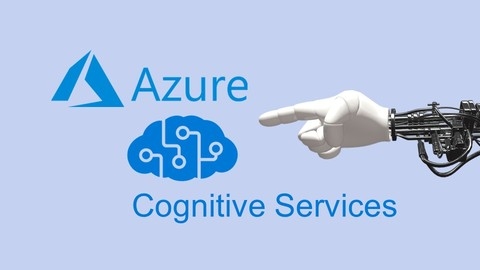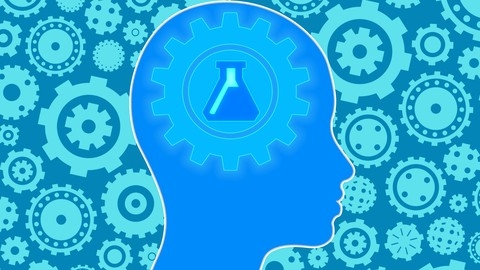Azure Cognitive Services are a collection of cloud-based AI and machine learning APIs that enable developers to add intelligent features to their applications.
These services can be used to perform a wide range of tasks, such as image analysis, speech recognition, natural language processing, and sentiment analysis.
By learning about Azure Cognitive Services, you can create powerful and innovative applications that can understand, interpret, and respond to user input in a natural and intuitive way.
Finding the right Azure Cognitive Services course on Udemy can be challenging, as there are so many options available.
You’re looking for a course that’s comprehensive, engaging, and taught by experts, but also fits your learning style and goals.
We’ve reviewed countless courses and, based on our analysis, Microsoft Azure Cognitive Services Crash Course is the best course on Udemy overall.
This comprehensive course covers a wide range of Azure Cognitive Services, providing practical examples and hands-on exercises that will help you gain real-world experience.
The instructor, a seasoned professional in the field, delivers engaging lessons that are easy to follow and understand.
While Microsoft Azure Cognitive Services Crash Course is our top pick, there are other great options available.
Keep reading to discover more recommendations for beginners, intermediate learners, and experts, as well as courses focusing on specific Azure Cognitive Services and use cases.
Microsoft Azure Cognitive Services Crash Course
You’ll explore the core Azure Cognitive Services, including Vision, Speech, Language, Decision, and Bing Search Services, gaining practical experience through demos and real-world examples.
Imagine building an app that can analyze images, understand speech, translate languages, or personalize user experiences.
This course equips you with the skills to make that vision a reality.
You’ll start by learning how to provision Azure Cognitive Services in the Azure Portal.
Then, you’ll dive into the Vision service, learning how to analyze images with Computer Vision, detect faces and emotions with Face, and even train your own custom image recognition models.
Want to build chatbots or understand the sentiment behind text?
The Language service empowers you to create intelligent applications, covering Text Analytics, Translator Text, QnA Maker, and Language Understanding (LUIS).
You’ll also learn how to use the Immersive Reader Service to improve reading accessibility.
The course doesn’t stop at the basics.
You’ll discover how to moderate content with Content Moderator, detect anomalies in data with Anomaly Detector, and personalize user experiences with the Personalizer service.
And for those seeking even more advanced AI skills, the course provides a glimpse into Azure Machine Learning, the next level of AI development.
This “Crash Course” is more than just a theoretical exploration.
It’s a practical guide to building intelligent applications using Azure Cognitive Services.
You’ll gain the knowledge and confidence to create innovative solutions that can transform your business or personal projects.
Ready to unlock the potential of AI?
Dive into this course and experience the power of Azure Cognitive Services firsthand.
Azure Machine Learning using Cognitive Services
You’ll start by understanding the fundamentals of machine learning, exploring its distinction from artificial intelligence and encountering real-world applications to ignite your curiosity.
Next, you’ll dive into the practical aspects, setting up your Azure subscription and mastering Python, a language widely used in machine learning, through Google Colaboratory.
You’ll gain essential programming skills, from manipulating variables and lists to crafting functions and slicing data – crucial tools for working with data and developing models.
The course then delves into specific Azure Cognitive Services, beginning with Text Analytics.
Here, you’ll learn to decipher the nuances of text, analyzing sentiment, extracting key phrases, removing unnecessary words, and even building a spell-checking service.
You’ll also unlock the power of the Text Translator Service, translating text between languages and identifying the language of any given text.
Moving to the world of speech, you’ll discover the Speech Translator Service, converting speech to text and vice versa across various languages.
You’ll learn to prepare your microphone for speech input and send requests for translation, expanding your capabilities in a dynamic world.
Another key area is the Language Understanding Intelligent Service (LUIS).
You’ll create intents and entities to build a language understanding model, train it, and deploy it as a service.
You’ll then learn to interact with this service to understand user input, a crucial skill for building conversational AI.
The course goes beyond text and speech, exploring Computer Vision, allowing you to analyze images, extract descriptions, perform optical character recognition, and even manipulate images by drawing lines.
The Face API empowers you to detect faces, group people, identify individuals, and even gauge emotions from faces, opening doors to powerful applications in security and user experience.
You’ll explore Content Moderation, learning how to identify and manage inappropriate language, personal information, and images, building safe and responsible applications.
The Video Indexer Service allows you to analyze videos, extracting valuable information like people, key moments, and even generating thumbnails, making your video content more engaging and accessible.
The Custom Vision Service equips you to create your own image classification models, training them to recognize specific objects in images, opening up possibilities for innovative image analysis.
Finally, the course introduces Bot Services, where you’ll learn to create a bot that utilizes Custom Vision functionality and connect it to popular channels like Facebook Messenger, bridging the gap between AI and user interaction.
Throughout the course, you’ll work with Azure Machine Learning Studio, learning to manipulate data, train models, and deploy web services.
You’ll even test your web services to ensure they’re functioning correctly.


